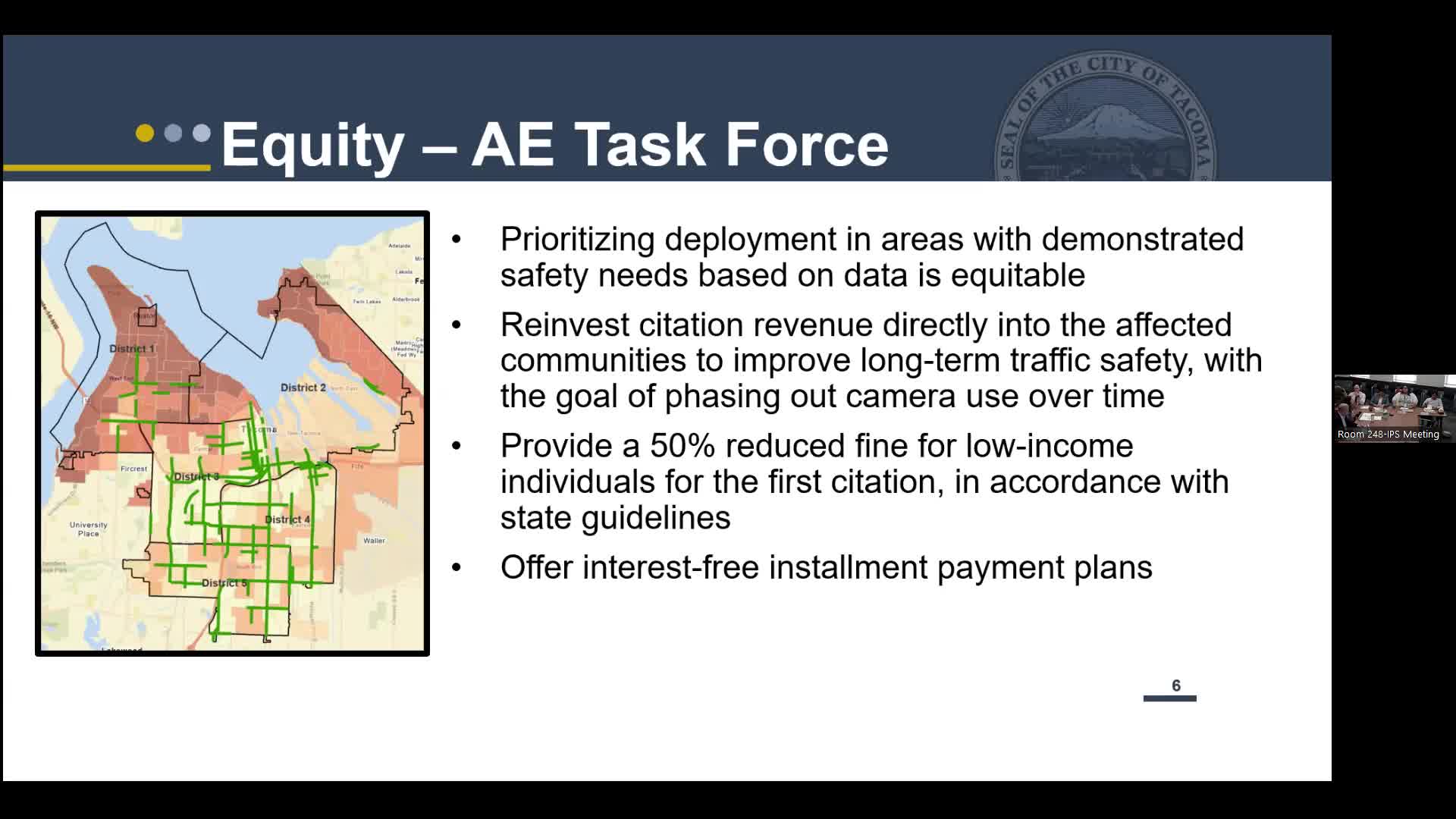Tacoma City Council proposes amendments for traffic safety camera regulations
April 23, 2025 | Tacoma, Pierce County, Washington
Thanks to Scribe from Workplace AI , all articles about Washington are free for you to enjoy throughout 2025!

This article was created by AI using a video recording of the meeting. It summarizes the key points discussed, but for full details and context, please refer to the video of the full meeting. Link to Full Meeting
Carrie, a key presenter, highlighted the importance of equity in the implementation of these traffic cameras. A significant point of discussion was the introduction of a 50% reduced fine for low-income individuals receiving their first citation. This initiative aims to alleviate the financial burden on vulnerable populations, yet officials acknowledged that the current interest-free payment plans are underutilized. Understanding the reasons behind this could lead to better outreach and support for those in need.
The meeting also delved into the procedural aspects of the camera system. A contentious topic arose regarding the necessity of a second warning period before citations are issued. While some argued that the initial 30-day warning should suffice, others pointed to best practices indicating that additional notifications can effectively change driver behavior.
Eric Huseby, assistant division manager for transportation, took the floor to discuss the technical amendments to the municipal code. He emphasized the need for clarity and alignment with state regulations, particularly in defining the types of infractions that the automated system would monitor, including stoplight violations, railroad crossings, and speeding. The proposed changes also included an adjustment to the fine structure, raising the maximum penalty to $145 and ensuring future adjustments for inflation.
Another critical aspect of the discussion was the handling of data collected by these cameras. Huseby reassured attendees that stringent state laws protect personal information, ensuring that data is used solely for enforcing traffic violations and not for any unrelated purposes. This transparency aims to address public concerns about surveillance and privacy.
As the meeting concluded, city officials expressed their commitment to a data-driven approach in identifying high-risk areas for camera placement. The focus remains on enhancing safety while fostering an equitable system that serves all Tacoma residents. With these amendments, Tacoma is poised to navigate the complexities of modern transportation challenges, balancing enforcement with compassion and understanding.
Converted from Tacoma - 20250423 Infrastructure planning and Sustainability - Apr 23, 2025 meeting on April 23, 2025
Link to Full Meeting
Comments
View full meeting
This article is based on a recent meeting—watch the full video and explore the complete transcript for deeper insights into the discussion.
View full meeting